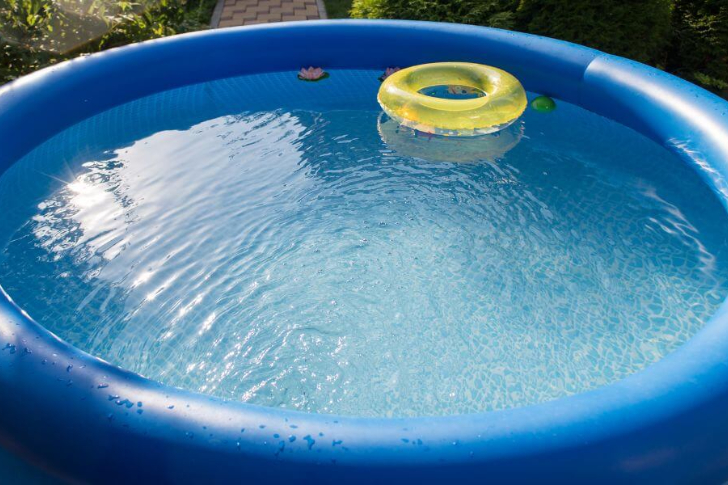Inflatable Pool: An Affordable and Convenient Option
In the midst of summer heat, an inflatable pool offers a convenient and cost-effective solution for families seeking relief and enjoyment without the commitment of installing a permanent pool. Unlike their more permanent counterparts, inflatable pools are versatile, portable, and accessible, making them a popular choice among households worldwide. This article explores the advantages of inflatable pools and provides information on their affordability, ecological impact, maintenance, and safety measures.

Cost-Effectiveness of Inflatable Pools
One of the primary advantages of inflatable pools is their affordability. Traditional in-ground pools can cost anywhere between $28,000 to $55,000, according to data from HomeAdvisor, while above-ground pools typically range from $1,500 to $15,000. In stark contrast, inflatable pools generally cost between $10 to $600, with most mid-sized options available under $100. This price disparity makes inflatable pools a far more accessible option for families on a budget or those unwilling to commit to the permanence and expense of a built-in pool.
Installation and Maintenance
Setting up an inflatable pool is straightforward and requires minimal technical skills. Most pools can be inflated and filled with water within a few hours, using standard air pumps and a garden hose. This ease of setup not only saves on installation costs (typically associated with traditional pools) but also allows for flexibility in usage; inflatable pools can be deflated and stored during the off-season, saving space and preserving the pool’s condition.
Maintenance of inflatable pools is relatively simple. Basic upkeep includes regular cleaning of the pool with net scoops and vacuums specifically designed for small pools, monitoring water chemistry with test kits, and changing water periodically or using small-scale water treatment options like chlorine or saltwater systems designed for inflatable pools. These maintenance requirements are significantly less demanding both in terms of effort and cost compared to those for in-ground pools, where homeowners need to consider long-term care including surface, plumbing, and filtration system maintenance.
Variety and Features
Inflatable pools come in various sizes, shapes, and depths, catering to different needs and preferences. From small kiddie pools just a few feet in diameter to larger pools that can accommodate entire families, there is an option for nearly every type of user. Recent technological advancements have also introduced features such as built-in seats, cup holders, and even connected inflatable games, enhancing the leisure experience these pools can offer.
Moreover, many inflatable pools are now made with durable, puncture-resistant materials and are equipped with multiple air chambers to prevent deflation, which ensures longevity and improves safety. Some higher-end models also feature enhanced UV-stabilized materials to reduce fading and wear from sun exposure.
Environmental Impact
When it comes to environmental concerns, inflatable pools do offer some advantages over built-in pools. Firstly, their smaller size typically requires less water, reducing the overall environmental footprint. According to the American Water Works Association, filling a standard in-ground pool requires about 18,000-20,000 gallons of water, whereas a large inflatable pool might use just 1,000 gallons. However, it’s crucial for owners to be conscientious about water usage, especially in regions where water scarcity is a problem.
Additionally, because inflatable pools are temporary, they don’t necessitate the landscaping, decking, and construction alterations associated with permanent pools, which involve more resource and energy consumption. With proper care, inflatable pools can last several years, and at the end of their life, some parts of the pool such as the PVC plastic might be recyclable, depending on local recycling guidelines.
Safety Considerations
Safety is an essential consideration with any pool. Inflatable pools necessitate vigilant supervision because they often lack the security features of permanent pools (such as fencing and covered drains). Always supervise children closely when using the pool, never leaving them unattended. Implementing soft, non-slip mats around the pool area can also prevent slips and falls.
It’s vital also to adhere to local regulations which may dictate safety measures, including fencing or barriers. Ensuring that the inflatable pool is set up in a flat, debris-free area to avoid punctures and maintaining clean, chemically balanced water are also key safety practices to prevent accidents and health issues.
Conclusion
As a beacon of relief and joy during the warm months, inflatable pools exemplify innovation that caters to convenience, budget, and flexibility. Whether it’s for a quick dip to cool off or a playful day with family and friends, an inflatable pool can be an excellent addition to your summer toolkit. By understanding and adhering to the proper setup, maintenance, and safety guidelines, you can maximize the benefits while minimizing the downsides of these versatile pools.







Recent Comments